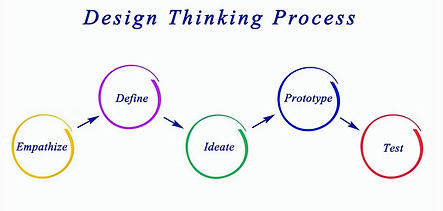
Drone Prototyping Challenge
Drone Prototyping Workshop (Spring 2023) hosted by the Mason Innovation Exchange (MIX) at George Mason University. This 8-week interdisciplinary program focused on rapid prototyping and innovation, bringing together participants to solve real-world challenges through drone technology. Our project, titled X-RECON, developed a drone-based solution to support post-disaster search and rescue (S&R) operations. We earned 2nd place for our innovative design and impactful presentation to a panel of judges, including active and retired first responders.

Challenge
The primary challenge was to create a drone solution to address:
-
Time-critical disaster response: Quickly mapping disaster zones and identifying risks.
-
Operational efficiency: Optimizing the efforts of first responders in dangerous, hard-to-access areas.
-
Cost-effectiveness: Providing a scalable, resource-saving system that works with minimal human intervention.


Background & Goals
The goal of the workshop was to design, prototype, and pitch a functional drone system capable of assisting first responders in disaster-hit areas.
Our solution aimed to:
-
Deliver real-time, high-resolution data.
-
Operate autonomously using machine learning and a mesh network for communication.
-
Create a post-disaster map to optimize rescue workflows.
Method
Using design thinking, our interdisciplinary team developed X-RECON, a system tailored to the needs of first responders:
-
Empathize:
-
Addressed safety risks, time pressure, and communication challenges faced by first responders.
-
-
Define:
-
Focused on quick awareness of hard-to-reach areas, overcoming terrain challenges, and ensuring safety.
-
-
Ideate:
-
Designed a flexible, easy-to-deploy system requiring no prior setup.
-
-
Prototype & Test:
-
Prototyped drones equipped with high-quality cameras and sensors.
-
Built and tested a machine learning algorithm for identifying damage and debris.
-
Established a mesh network to enable communication without relying on the internet.
-
Lenses of design thinking
Desirability (User)
-
Quickly and accurately assess the damage
-
Effectively plan and prioritize their rescue efforts
Feasibility (Technical)
-
High-quality cameras and sensors Fly over large areas quickly
-
Transmitting captured data to a central location for analysis.
Viability (Business)
-
Cost-effective
-
Ease of use
-
Durability & Reliability
-
Functionality


Recommendation & Impact
-
Practicality: Judges praised the system’s ability to provide real-time actionable insights.
-
Future Applications: Expanding the model with thermal imaging, greater durability, and enhanced AI capabilities.
-
Human-Centered Design: Solutions like X-RECON demonstrate the importance of aligning technology with user needs.
Lessons Learned
✅ Interdisciplinary Collaboration drives innovation.
✅ Human-centered design is critical for emergency response technologies.
✅ Prototyping and Testing are vital for identifying and refining user-centric solutions.